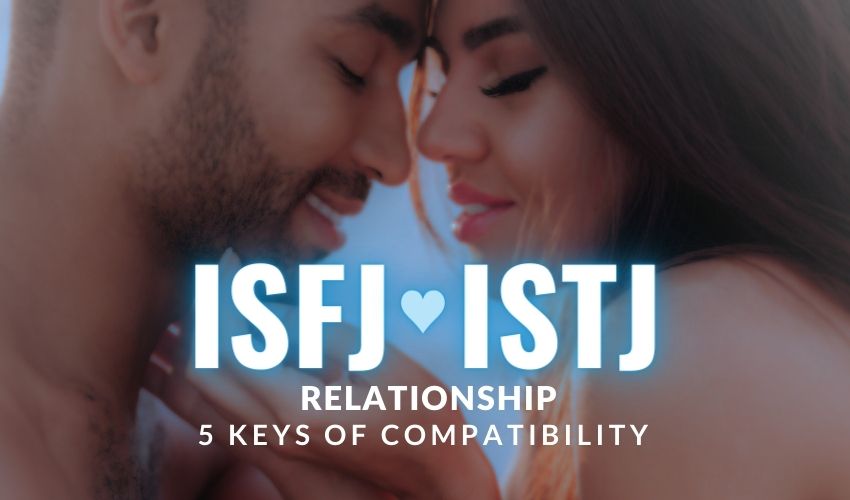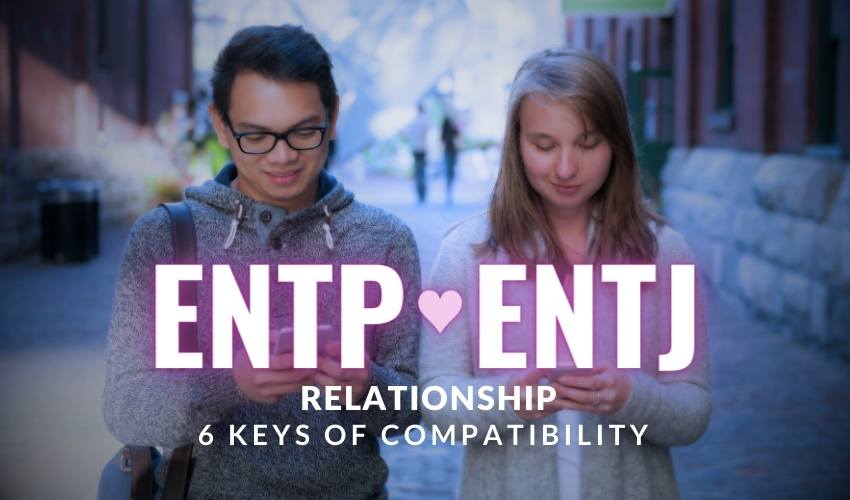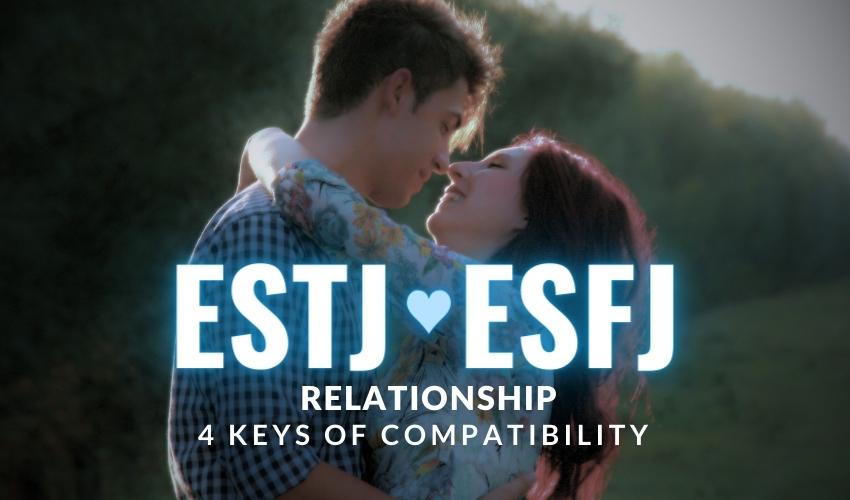Learning styles, such as visual, auditory, kinesthetic, or read/write preferences, are typically more influenced by individual cognitive and sensory processing preferences, educational experiences, and environmental factors. Individuals with certain MBTI preferences might gravitate towards certain learning environments or teaching methods that align with their preferences.
For example, extraverts might prefer group discussions and interactive activities, while introverts might prefer solitary study or reflective exercises. Similarly, individuals with a preference for intuition might enjoy conceptual, big-picture learning, whereas those with a preference for sensing might prefer concrete, hands-on experiences.
Here is a look at each MBTI type and what research and surveys have gathered about their learning style preferences.
INTP
INTPs are most comfortable learning when:
| ♠ |
encountering new problems or opportunities from which to learn |
| ♠ |
able to stand back from events and listen/observe, e.g. taking a back seat in a meeting, watching a video |
| ♠ |
allowed to generate ideas without constraints of policy or structure or feasibility |
| ♠ |
allowed to think before acting, to assimilate before commenting, time to prepare or do background reading |
| ♠ |
acquiring knowledge which is part of a system, model, concept, or theory, even when this is not immediately relevant |
| ♠ |
given the chance to question and probe the basic methodology, assumptions or logic behind something, e.g. by taking part in a question and answer session |
| ♠ |
listening to or reading about ideas and concepts that emphasize rationality or logic and are well argued |
| ♠ |
analyzing and then generalizing the reasons for success or failure |
INTP’s are least comfortable when:
| ♠ |
asked to repeat essentially the same activity over and over again |
| ♠ |
given precise instructions to follow with little room for maneuver |
| ♠ |
asked to attend to detail and tie up loose ends |
| ♠ |
‘forced’ into the limelight, e.g. to act as leader/chairman, to role-play in front of onlookers; |
| ♠ |
given precise and specific instructions of how things should be done |
| ♠ |
asked to do something without a context or apparent purpose or to participate in situations emphasizing emotions and feelings |
| ♠ |
faced with a lot of alternative techniques without any being explored in depth |
| ♠ |
there is more focus on facts and figures than intellectual exploration |
INTJ
INTJs are most comfortable learning when:
| ♠ |
experiencing new problems or opportunities from which to learn |
| ♠ |
able to stand back from events and listen/observe, e.g. observing a group at work, taking a back seat in a meeting, watching a video |
| ♠ |
allowed to think before acting, to assimilate before commenting, allowed time to prepare or do background reading |
| ♠ |
acquiring knowledge which is part of a system, model, concept, theory |
| ♠ |
given the chance to question and probe the basic methodology, assumptions or logic behind something, e.g. by taking part in a question and answer session |
| ♠ |
intellectually stretched, i.e. by analyzing a complex situation, being tested in a tutorial session, by being with high caliber people who ask searching questions |
| ♠ |
finding themselves in structured situations with a clear purpose |
| ♠ |
listening to or reading about ideas and concepts that emphasize rationality or logic and are well argued |
| ♠ |
analyzing and then generalizing the reasons for success or failure |
| ♠ |
offered interesting ideas and concepts even though they are not immediately relevant |
| ♠ |
required to understand and participate in complex situations. |
| ♠ |
concentrating on important issues by drawing up action plans |
INTJ’s are least comfortable when:
| ♠ |
asked to repeat essentially the same activity over and over again |
| ♠ |
given precise instructions to follow with little room for maneuver |
| ♠ |
asked to attend to detail and tie up loose ends |
| ♠ |
involved in situations which require action without planning |
| ♠ |
asked to do something without a context or apparent purpose and to participate in situations emphasizing emotions and feelings |
| ♠ |
involved in unstructured activities where ambiguity and uncertainty are high, e.g. with open-ended problems |
| ♠ |
faced with a lot of alternative techniques without any being explored in depth |
ENTP
ENTPs are most comfortable learning when:
| ♠ |
experiencing new problems/opportunities from which to learn |
| ♠ |
stepping into the limelight or positions of high visibility, e.g. chairing meetings, leading discussions, giving presentations |
| ♠ |
engaged in a wide variety of diverse activities |
| ♠ |
involved with other people, e.g. discussing ideas, solving problems as part of a team |
| ♠ |
acquiring knowledge which is part of a system, model, concept, theory |
| ♠ |
given the chance to question and probe the basic methodology, assumptions or logic behind something, e.g. by taking part in a question and answer session, by checking a paper for inconsistencies |
| ♠ |
intellectually stretched, e.g. by analyzing a complex situation, by being tested in a tutorial session, by learning with high caliber people who ask searching questions |
| ♠ |
listening or reading about ideas and concepts that emphasize rationality or logic and are well argued |
| ♠ |
analyzing and then generalizing the reasons for success or failure |
| ♠ |
required to understand and participate in complex situations |
ENTP’s are least comfortable when:
| ♠ |
required to engage in solitary work, e.g. reading, writing, thinking on their own |
| ♠ |
involved in a passive role, e.g. listening to lectures, explanations, statements of how things should be done, reading, watching |
| ♠ |
asked to stand back and not be involved |
| ♠ |
asked to repeat essentially the same activity over and over again, e.g. when practicing |
| ♠ |
given precise instructions to follow with little room for maneuver |
| ♠ |
required to attend to detail or tie up loose ends |
| ♠ |
asked to participate in situations emphasizing emotions and feelings |
ENTJ
ENTJs are most comfortable learning when:
| ♠ |
experiencing new problems or opportunities from which to learn |
| ♠ |
catching the limelight, e.g. when chairing meetings, leading discussions, giving presentations |
| ♠ |
involved with other people e.g. discussing ideas, solving problems as part of a team |
| ♠ |
acquiring knowledge which is part of a system, model, concept, theory |
| ♠ |
given the chance to question and probe the basic methodology, assumptions or logic behind something, e.g. by taking part in a question and answer session, by checking a paper for inconsistencies |
| ♠ |
intellectually stretched, e.g. by analyzing a complex situation, by being tested in a tutorial session, by learning with high caliber people who ask searching questions |
| ♠ |
placed in structured situations with a clear purpose |
| ♠ |
listening or reading about ideas and concepts that emphasize rationality or logic and are well argued |
| ♠ |
analyzing and then generalizing the reasons for success or failure |
| ♠ |
required to understand and participate in complex situations |
ENTJs are least comfortable when:
| ♠ |
required to engage in solitary work, e.g. reading, writing, thinking on their own |
| ♠ |
they are given precise instructions to follow with little room for maneuver |
| ♠ |
asked to do a thorough job, e.g. to attend to detail, tie up loose ends |
| ♠ |
given precise and specific instructions of how things should be done |
| ♠ |
asked to do something without a context or apparent purpose and they have to participate in situations emphasizing emotions and feelings |
| ♠ |
asked to act or decide without a basis in policy, principle or concept |
| ♠ |
faced with a lot of alternative techniques without any being explored in depth |
| ♠ |
However, engaging in learning activities that contain some of the above is often of greater benefit in terms of their overall development, as discussed earlier. |
INFP
INFPs are most comfortable learning when:
| ♠ |
experiencing new problems or learning opportunities |
| ♠ |
allowed to generate ideas without constraints of policy or structure or feasibility |
| ♠ |
required to engage in solitary work, e.g. reading, writing, thinking |
| ♠ |
allowed or encouraged to watch/think/check over activities |
| ♠ |
able to stand back from events and listen and observe, e.g. observing a group at work, taking a back seat in a meeting, watching a video |
| ♠ |
allowed to think before acting or to assimilate before commenting |
| ♠ |
given time to prepare, or read in advance |
| ♠ |
allowed to reach a decision in their own time without pressure and tight deadlines |
| ♠ |
acquiring knowledge that is part of a system, model, concept, theory |
| ♠ |
offered interesting ideas and concepts even though these are not immediately relevant |
INFPs are least comfortable when:
| ♠ |
forced into the limelight, e.g. to act as leader or to role-play in front of onlookers |
| ♠ |
involved in situations which require action without planning |
| ♠ |
given instructions about how things should be done, with little room for maneuver |
| ♠ |
asked to repeat essentially the same activity over and over again, e.g. when practicing a task |
| ♠ |
asked to attend to detail or tie up loose ends |
| ♠ |
faced with a lot of alternative techniques without any being explored in depth |
INFJ
INFJs are most comfortable learning when:
| ♠ |
reading, reflecting, exchanging ideas and linking them to their existing knowledge |
| ♠ |
allowed to generate ideas without constraints |
| ♠ |
involved with other people e.g. discussing ideas, solving problems as part of a team, feeling it is appropriate to ‘have a go’ |
| ♠ |
able to stand back from events and listen/observe, e.g. observing a group at work, taking a back seat in a meeting, reflecting on what they have learnt |
| ♠ |
allowed to think before acting, to assimilate before commenting, or given time to prepare or to do background reading |
| ♠ |
given the chance to question and probe the basic methodology, assumptions or logic behind an idea |
| ♠ |
in structured situations with a clear purpose |
| ♠ |
asked to assess beforehand what they will learn from a project, and to appraise afterwards what they have learned |
INFJs are least comfortable when:
| ♠ |
asked to repeat essentially the same activity over and over again, e.g. when practicing a task |
| ♠ |
having to carry out painstaking research, e.g. investigating, assembling information, probing to get to the bottom of things, or when asked to produce carefully considered analyses and reports |
| ♠ |
‘forced’ into the limelight, e.g. to act as leader or chairman |
| ♠ |
having to stick to precise and specific instructions about how things should be done |
| ♠ |
asked to act or decide without a basis in policy, principle or concept |
| ♠ |
the focus is on analysis, detail or facts and figures |
ENFP
ENFPs are most comfortable learning when:
| ♠ |
experiencing new problems or learning opportunities |
| ♠ |
there are a wide range of diverse activities |
| ♠ |
asked to be in the limelight or positions of high visibility |
| ♠ |
allowed to generate ideas without constraints of policy or structure or feasibility |
| ♠ |
involved with other people, e.g. discussing ideas, solving problems as part of a team |
| ♠ |
when acquiring knowledge which is part of a system, model, concept, theory |
| ♠ |
they can question and probe the basic methodology, assumptions or logic behind something, e.g. by taking part in a question and answer session |
| ♠ |
offered interesting ideas and concepts even though they are not immediately relevant |
| ♠ |
shown techniques for personal improvement, such as how to make a good first impression, how to deal with awkward people |
ENFPs are least comfortable when:
| ♠ |
involved in a passive role, e.g. listening to lectures, monologues, explanations, statements of how things should be done, reading, watching |
| ♠ |
asked to stand back and not be involved |
| ♠ |
required to engage in solitary work, e.g. reading, writing, thinking on their own |
| ♠ |
asked to repeat essentially the same activity over and over again, e.g. when practicing tasks |
| ♠ |
they are given precise instructions to follow with little room for maneuver |
| ♠ |
required to focus on detail or tie up loose ends |
ENFJ
ENFJs are most comfortable learning when:
| ♠ |
tackling new problems/opportunities from which to learn |
| ♠ |
experiencing excitement/drama/crisis and a range of diverse activities to tackle |
| ♠ |
being in the limelight e.g. they can ‘chair’ meetings, lead discussions, give presentations etc. |
| ♠ |
allowed to generate ideas without constraints of policy or structure or feasibility |
| ♠ |
involved with other people, e.g. discussing ideas, solving problems as part of a team |
| ♠ |
allowed or encouraged to watch/think/check over activities; |
| ♠ |
acquiring knowledge which is part of a system, model, concept, theory |
| ♠ |
in structured situations with a clear purpose |
ENFJs are least comfortable when:
| ♠ |
they can’t see sufficient reward from the learning activity, e.g. harmonization, shorter meetings, standardization, greater efficiency. |
| ♠ |
involved in a passive role, e.g. listening to lectures, monologues, explanations, statements of how things should be done, reading, watching |
| ♠ |
asked to stand back and not be involved |
| ♠ |
required to assimilate, analyse and interpret lots of data |
| ♠ |
required to engage in solitary work, e.g. reading, writing, thinking on their own |
| ♠ |
asked to repeat essentially the same activity over and over again, e.g. when practicing tasks |
| ♠ |
they have precise instructions to follow with little room for maneuver |
| ♠ |
asked to attend to detail, tie up loose ends, focus on the task in hand |
ISFJ
ISFJs are most comfortable learning when:
| ♠ |
engrossed in short ‘here and now’ activities such as competitive teamwork tasks, role-playing exercises |
| ♠ |
standing back from events as observers, e.g. taking a back seat in a meeting, watching a group at work, a video or presentation |
| ♠ |
allowed to think before acting, to assimilate before commenting |
| ♠ |
finding themselves in structured situations with a clear purpose |
| ♠ |
shown techniques which achieve obvious practical benefits, i.e. in time, making a good first impression, dealing with awkward people |
| ♠ |
they can try out and practice techniques with coaching and feedback |
| ♠ |
exposed to a model they can copy, e.g. a respected boss or an expert with a proven track record |
ISFJs are least comfortable when:
| ♠ |
forced into the limelight, e.g. to act as leader, to role-play in front of onlookers |
| ♠ |
involved in situations which require action without planning |
| ♠ |
asked to do something without warning, e.g. to produce an instant reaction |
| ♠ |
involved in unstructured activities where there is ambiguity and uncertainty |
| ♠ |
the learning is abstract and theoretical and not related to an immediate need or practical benefit |
| ♠ |
there is no practice or clear guidelines on how to do something |
| ♠ |
they feel that people are going round in circles and not getting anywhere fast enough |
| ♠ |
expected to act without clear guidelines or opportunities for planning or practice |
| ♠ |
they can’t see sufficient reward from the learning activity, e.g. shorter meetings, standardization, greater efficiency |
| ♠ |
faced with a lot of alternative or contradictory techniques and methods without any being explored in depth. |
ISTJ
ISTJs are most comfortable learning when:
| ♠ |
engrossed in short ‘here and now’ activities such as business games, competitive teamwork tasks, role-playing exercises |
| ♠ |
able to stand back from events and listen/observe, e.g. observing a group at work, taking a back seat in a meeting |
| ♠ |
allowed to think before acting, assimilate before commenting, to prepare in advance |
| ♠ |
carrying out painstaking research |
| ♠ |
given the opportunity to review what they have learnt |
| ♠ |
asked to produce carefully considered analyses and reports |
| ♠ |
finding themselves in structured situations with a clear purpose |
| ♠ |
presented with ideas and concepts that emphasize rationality or logic, and are well argued |
| ♠ |
when concentrating on, or being shown techniques for doing things with obvious practical advantages e.g. saving time, drawing up action plans, dealing with awkward people |
| ♠ |
given the chance to try out and practice techniques with coaching/feedback from a credible expert |
| ♠ |
exposed to a model they can copy, e.g. a respected boss, a demonstration from someone with a proven track record |
| ♠ |
given immediate opportunities to implement what they have learned |
ISTJ’s are least comfortable when:
| ♠ |
the learning is abstract and theoretical and or practical benefit |
| ♠ |
expected to act without clear guidelines or opportunities for planning or practice there is no practice or clear guidelines |
| ♠ |
there are political, managerial or personal obstacles to implementation |
| ♠ |
asked to do something without warning, e.g. to produce an instant reaction |
| ♠ |
obliged to participate in situations with a strong emotional or interpersonal content |
| ♠ |
involved in unstructured activities where there is ambiguity and uncertainty |
ESFJ
ESFJs are most comfortable learning when:
| ♠ |
engrossed in short ‘here and now’ activities such as competitive teamwork tasks, role-playing exercises |
| ♠ |
they are in the limelight or a position of high visibility e.g. they can ‘chair’ meetings, lead discussions, give presentations |
| ♠ |
involved with other people e.g. discussing ideas, solving problems as part of a team |
| ♠ |
there is an obvious link between the subject matter and a problem or opportunity on the job |
| ♠ |
shown techniques which achieve obvious practical benefits, e.g. in saving time, making a good first impression, dealing with awkward people |
| ♠ |
they can try out and practise techniques with coaching and feedback |
| ♠ |
exposed to a model they can copy, e.g. a respected boss or an expert with a proven track record |
ESFJ’s are least comfortable when:
| ♠ |
involved in a passive role, e.g. listening to lectures, , explanations, statements of how things should be done, reading, watching |
| ♠ |
required to assimilate, analyse and interpret lots of data |
| ♠ |
required to engage in solitary work, e.g. reading, writing, thinking on their own |
| ♠ |
the learning is abstract and theoretical and not related to an immediate need or practical benefit |
| ♠ |
expected to act without clear guidelines or opportunities for planning or practice |
| ♠ |
they can’t see sufficient benefit from the learning activity, i.e., shorter meetings, standardisation, greater efficiency. |
ESTJ
ESTJs are most comfortable learning when:
| ♠ |
engrossed in short ‘here and now’ activities such as business games, competitive teamwork tasks, role-playing exercises |
| ♠ |
stepping into the limelight or positions of high visibility, e.g. chairing meetings, leading discussions, giving presentations |
| ♠ |
involved with other people e.g. discussing ideas, solving problems as part of a team |
| ♠ |
finding themselves in structured situations with a clear purpose |
| ♠ |
shown techniques which achieve obvious practical benefits, e.g. in saving time, making a good first impression, dealing with awkward people |
| ♠ |
they can try out and practice techniques with coaching and feedback |
| ♠ |
exposed to a model they can copy, e.g. a respected boss or an expert with a proven track record |
| ♠ |
given immediate opportunities to implement what they have learned |
ESTJ’s are least comfortable when:
| ♠ |
involved in a passive role, e.g. listening to lectures, explanations, statements of how things should be done, reading, watching |
| ♠ |
required to assimilate, analyse and interpret lots of data |
| ♠ |
required to engage in solitary work, e.g. reading, writing, thinking on their own |
| ♠ |
the learning is abstract and theoretical and not related to an immediate need or a practical benefit |
| ♠ |
the organizers of the learning, or the event itself, seem distant from reality, all theory and general principles |
| ♠ |
expected to act without clear guidelines or opportunities for planning or practice |
| ♠ |
they can’t see sufficient benefit from the learning activity, i.e. shorter meetings, standardization, greater efficiency |
ISFP
ISFPs are most comfortable learning when:
| ♠ |
engrossed in short ‘here and now’ activities such as competitive teamwork tasks |
| ♠ |
engaged in a wide range of diverse activities |
| ♠ |
allowed or encouraged to watch/think/check over activities |
| ♠ |
able to stand back from events and listen or observe |
| ♠ |
allowed to think before acting, to assimilate before commenting, e.g. time to prepare, a chance to read in advance a brief giving background data |
| ♠ |
they can reach a decision in their own time without pressure and tight deadlines |
| ♠ |
there is an obvious link between the subject matter and a problem or opportunity on the job |
| ♠ |
shown techniques for doing things with obvious practical advantages e.g. how to save time, how to make a good first impression, how to deal with awkward people |
| ♠ |
they can try out and practice techniques with coaching and feedback |
| ♠ |
given techniques currently applicable to their own jobs |
| ♠ |
given immediate opportunities to implement what they have learned |
| ♠ |
they can concentrate on practical issues, e.g. drawing up action plans with an obvious end product, suggesting short cuts, giving tips |
ISFPs are least comfortable when:
| ♠ |
the learning is not related to an immediate need they recognize or they cannot see an immediate relevance or practical benefit |
| ♠ |
the organizers of the learning, or the event itself, seem distant from reality, all theory and general principles |
| ♠ |
there is no practice or no clear guidelines on how to do something |
| ♠ |
forced into the limelight, e.g. to act as leader/chairman, or to role-play in front of on-lookers |
ISTP
ISTPs are most comfortable learning when:
| ♠ |
set problems to solve and can engross themselves in the subject |
| ♠ |
there are a range of diverse activities |
| ♠ |
allowed to generate ideas without constraints of policy or structure or feasibility |
| ♠ |
able to stand back from events and listen or observe |
| ♠ |
allowed to think before acting or assimilate before commenting |
| ♠ |
they can carry out research, i.e. investigate, assemble information, probe to get to the bottom of things |
| ♠ |
they have the opportunity to review what has happened or what they have learned, i.e. are asked to produce carefully considered analyses and reports |
| ♠ |
there is an obvious link between the subject matter and a problem or opportunity on the job |
| ♠ |
they have the chance to try out and practise techniques with coaching or feedback from a credible expert |
| ♠ |
given techniques currently applicable to their own jobs |
| ♠ |
given immediate opportunities to implement what they have learned |
ISTP’s are least comfortable when:
| ♠ |
the learning is not related to an immediate need they recognize or can see, or there appears to be no immediate relevance or practical benefit |
| ♠ |
the organizers of the learning, or the event itself, seem distant from reality, all theory and general principles |
| ♠ |
there is no practice or clear guidelines on how to do something |
| ♠ |
they feel that people are going round in circles, engaging in pointless discussion and not getting anywhere fast enough |
| ♠ |
there are political, managerial or personal obstacles to implementation |
| ♠ |
they can’t see sufficient reward from the learning activity, e.g. harmonization, shorter meetings, standardization, greater efficiency. |
| ♠ |
asked to attend to detail, tie up loose ends, focus on the task in hand |
ESFP
ESFPs are most comfortable learning when:
| ♠ |
experiencing new problems or opportunities from which to learn |
| ♠ |
engrossing themselves in short ‘here and now’ activities such as business games, competitive teamwork tasks, role-playing exercises |
| ♠ |
experiencing excitement/drama/crisis and a range of diverse activities to tackle |
| ♠ |
they are in the limelight or a position of high visibility, e.g. chairing meetings, leading discussions, giving presentations |
| ♠ |
allowed to generate ideas without constraints of policy or structure or feasibility |
| ♠ |
involved with other people, e.g. discussing ideas, solving problems as part of a team |
| ♠ |
shown techniques for doing things with obvious practical advantages e.g. how to save time, how to make a good first impression, how to deal with awkward people |
| ♠ |
they can try out and practice techniques with coaching and feedback |
| ♠ |
given techniques currently applicable to their own jobs |
| ♠ |
given immediate opportunities to implement what they have learned |
ESFP’s are least comfortable when:
| ♠ |
in a passive role, e.g. listening to lectures, , explanations, statements of how things should be done, reading, watching |
| ♠ |
asked to stand back and not be involved |
| ♠ |
required to engage in solitary work, e.g. reading, writing, thinking on their own |
| ♠ |
faced with a lot of theory, analysis or abstract thinking |
| ♠ |
the learning is not related to an immediate need or a practical benefit |
| ♠ |
expected to act without clear guidelines or opportunities for planning or practice |
ESTP
ESTPs are most comfortable learning when:
| ♠ |
set problems to solve |
| ♠ |
engrossed in short ‘here and now’ activities such as business games, competitive teamwork tasks, role-playing exercises |
| ♠ |
there is excitement, drama, crisis or a range of diverse activities to tackle |
| ♠ |
stepping into the limelight or positions of high visibility, e.g. chairing meetings, leading discussions, giving presentations |
| ♠ |
involved with other people e.g. discussing ideas, solving problems as part of a team |
| ♠ |
listening to or reading about ideas and concepts that emphasize rationality or logic and are well argued |
| ♠ |
shown techniques which achieve obvious practical benefits e.g. in saving time, making a good first impression, dealing with awkward people |
| ♠ |
trying out or practicing techniques with coaching or feedback |
| ♠ |
given immediate opportunities to implement what they have learned |
ESTP’s are least comfortable when:
| ♠ |
the learning is abstract and theoretical and not related to an immediate need or practical benefit |
| ♠ |
expected to act without clear guidelines or opportunities for planning or practice |
| ♠ |
there is no practice or clear guidelines on how to do something |
| ♠ |
they can’t see sufficient reward from the learning activity, e.g. shorter meetings, standardization, greater efficiency. |
| ♠ |
required to engage in solitary work, e.g. reading, writing, thinking on their own or having to participate in situations emphasizing emotions and feelings. |
| ♠ |
asked to attend to detail, tie up loose ends, focus on the task in hand |
source: http://www.teachersrock.net/index.htm
related posts:
Jetta Moon is an artist, writer and astrology blogger. This site gives him an excuse to explore, learn and write about the world of psychology, astrology and various personality type systems.
Latest posts by Jetta Moon
(see all)
Related





